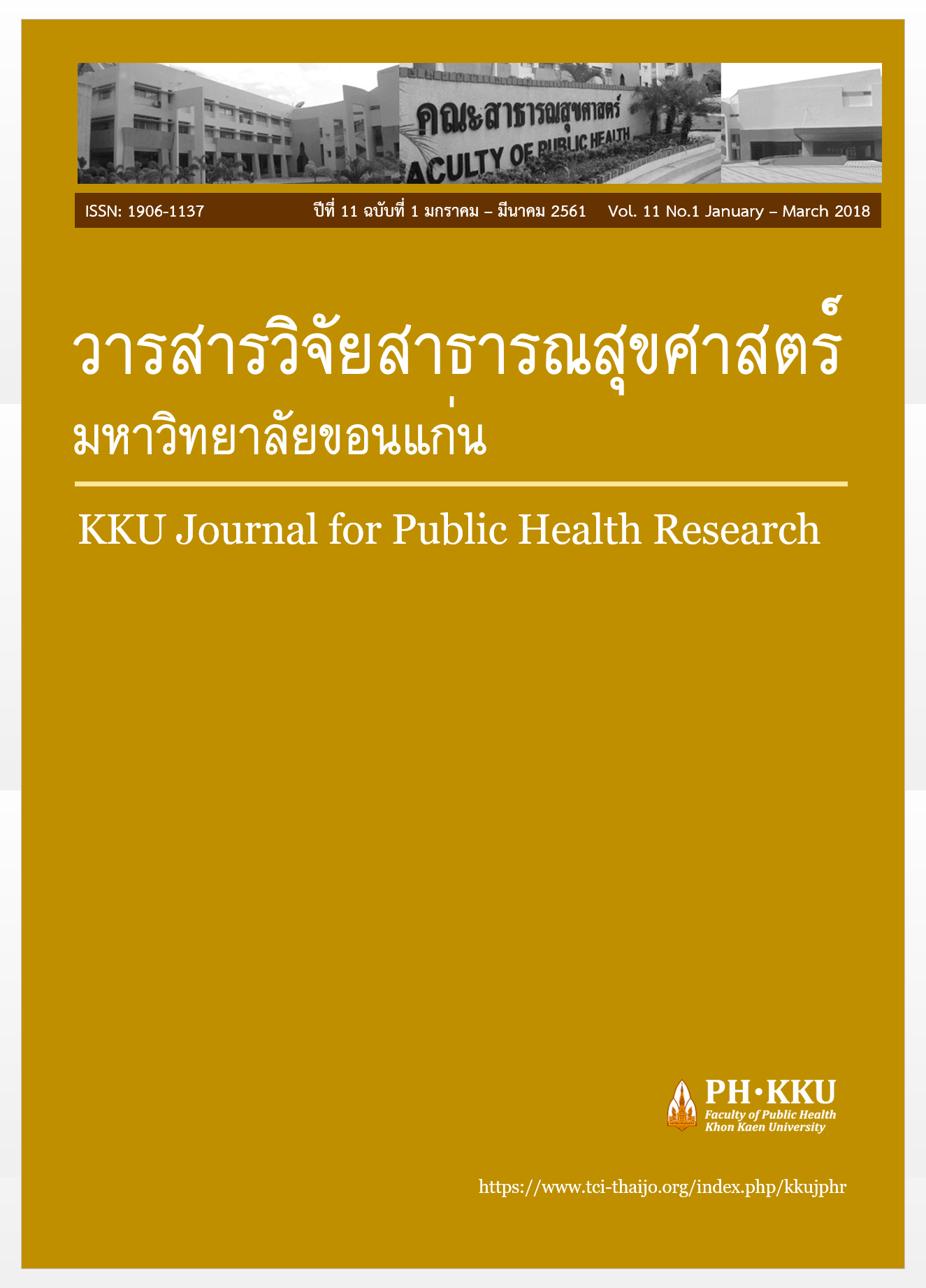Anaesthetic Techniques for Caesarean Section and Pregnancy Outcomes
คำสำคัญ:
Anaesthesia, Caesarean Section, Pregnancy Outcomesบทคัดย่อ
There are several types of anesthesia techniques for caesarean
section. In Thailand, there is no evidence on comparing adverse pregnancy
outcomes among women with different anaesthetic techniques during
caesarean section (CS). This study aimed to investigate pregnancy outcomes in
women who underwent CS by different anaesthetic techniques, secondary
analysis of Thai database of the WHO Global (WHOGS) and Multi- country
(WHOMCS) surveys was conducted. Singleton pregnancies delivered by CS
under general anaesthesia (GA), spinal anaesthesia (SA) or epidural anaesthesia (EA)
were included. Multilevel logistic regression was applied. Main outcome
measures included maternal death, maternal near miss, maternal admission to
intensive care unit (ICU), postpartum haemorrhage (PPH), early neonatal death,
Apgar score <7 at five minutes and admission to neonatal intensive care unit
(NICU).
Results: 3,241 women undergoing CS in WHOGS and 3,345 women
undergoing CS in WHOMCS were analysed. Overall, GA was the most common
method used for CS in both surveys (63.1% in WHOGS and 58.0% in WHOMCS).
Adjusted odds ratios (aOR 95%CI) showed significantly lower association with
maternal near miss (0.34(0.17-0.69)), PPH (0.41(0.22-0.74)), and Apgar score
<7 at five minutes (0.07(0.01-0.57)) with SA compared to GA.
Conclusions: CS under SA had lower odds of maternal near miss,
PPH, and Apgar score less than seven at five minutes compared to GA.



